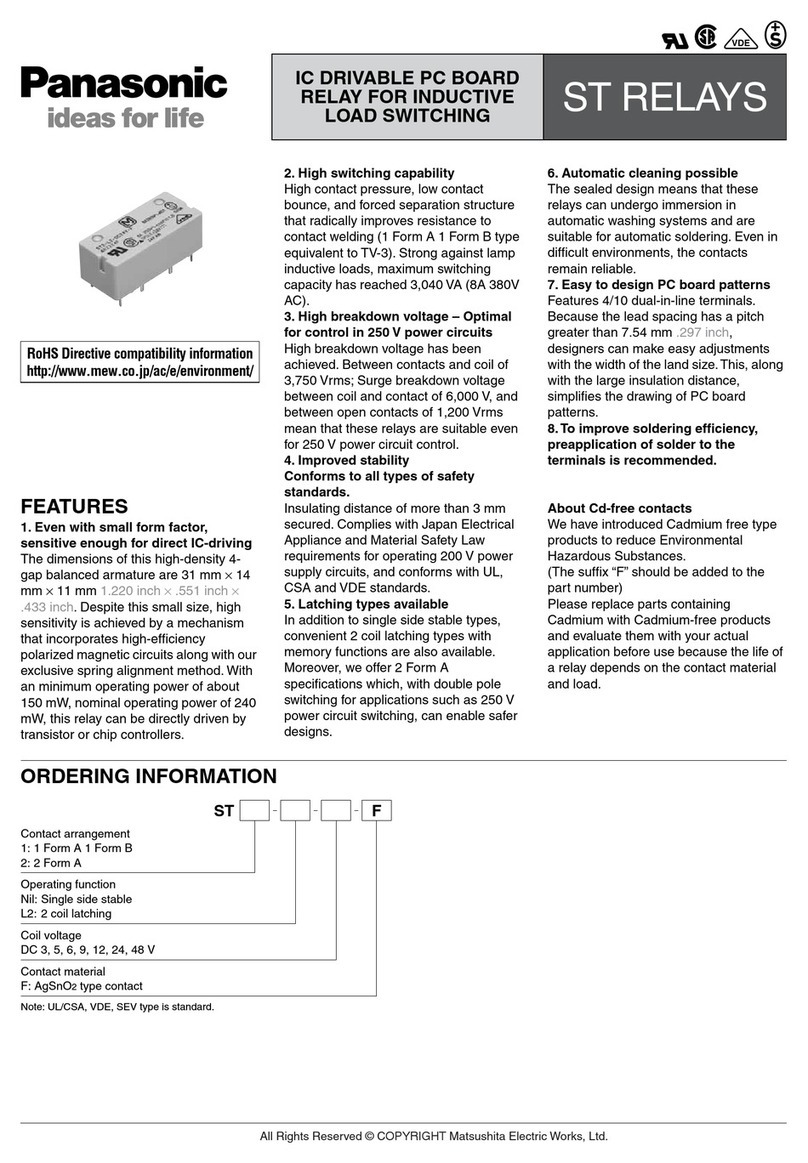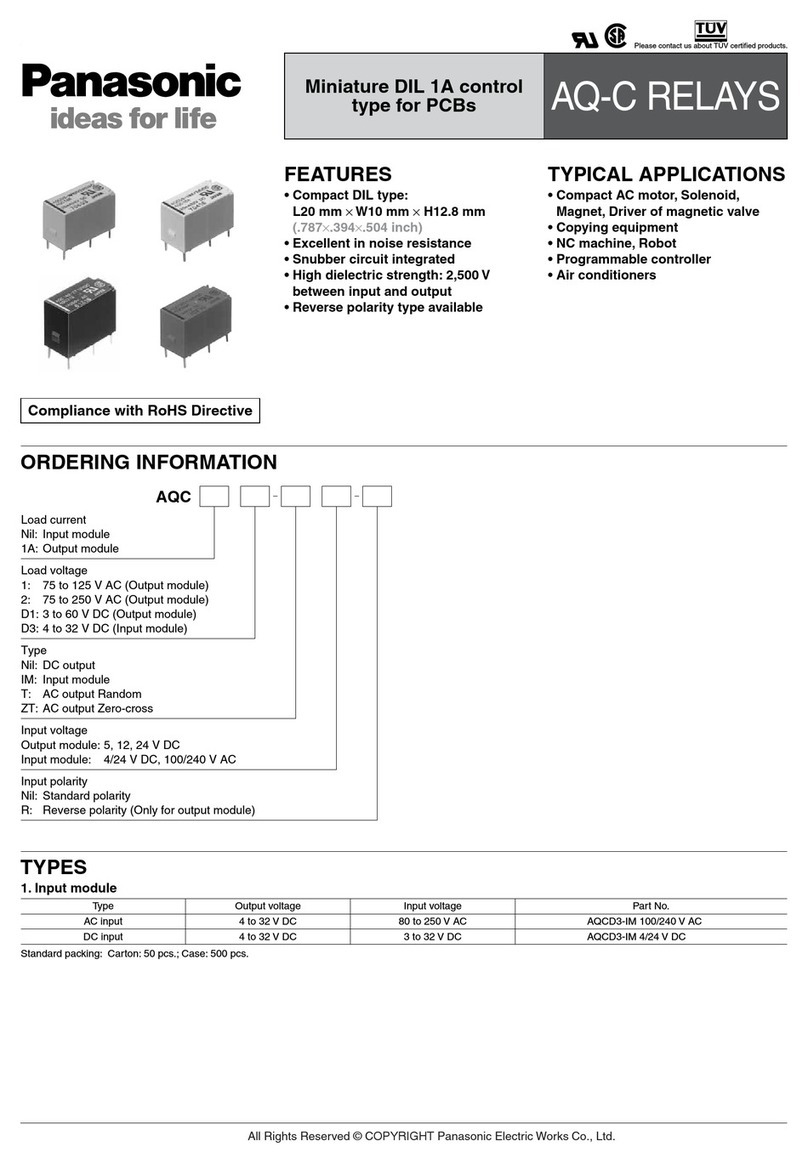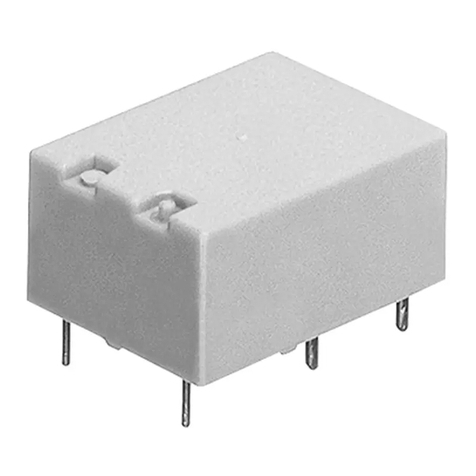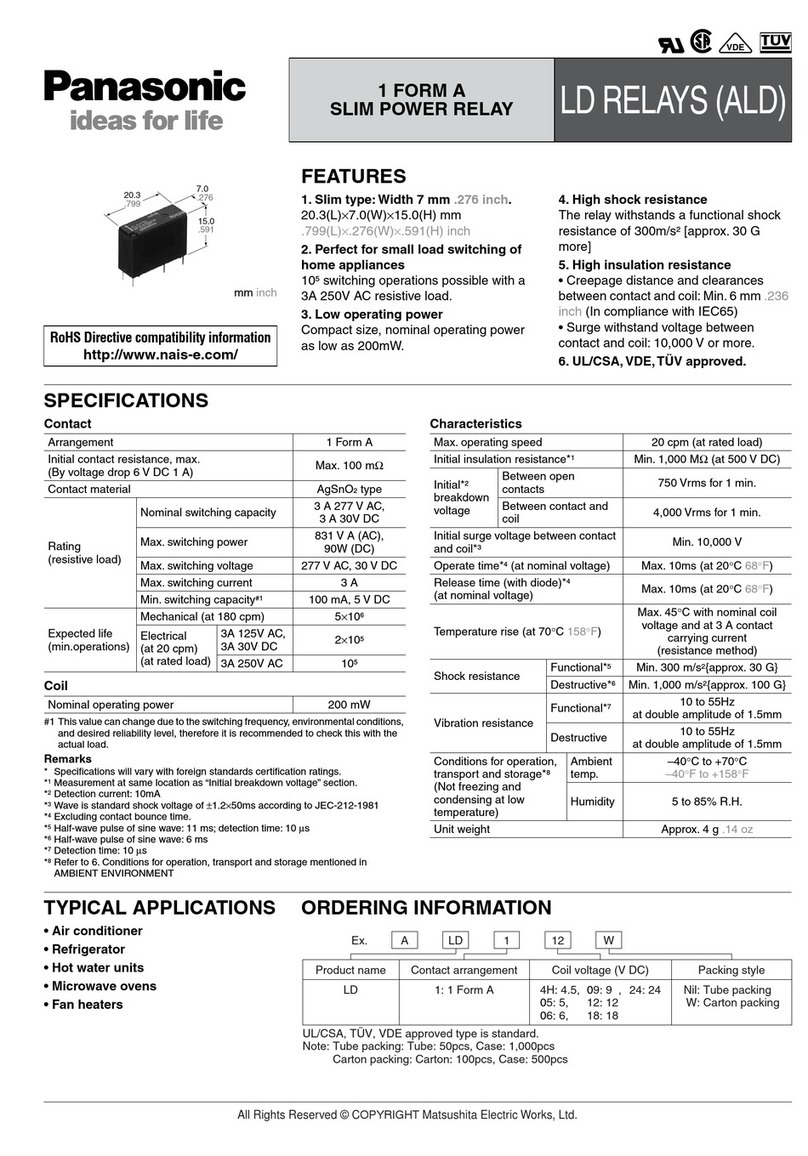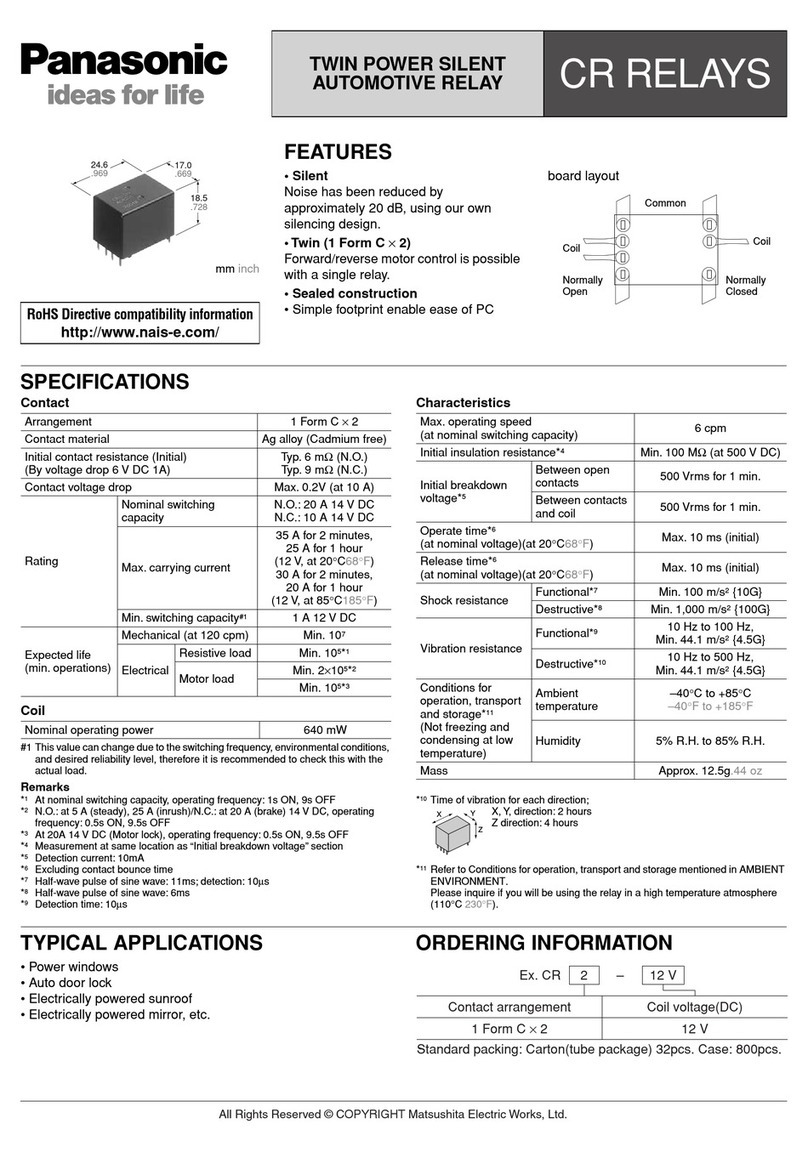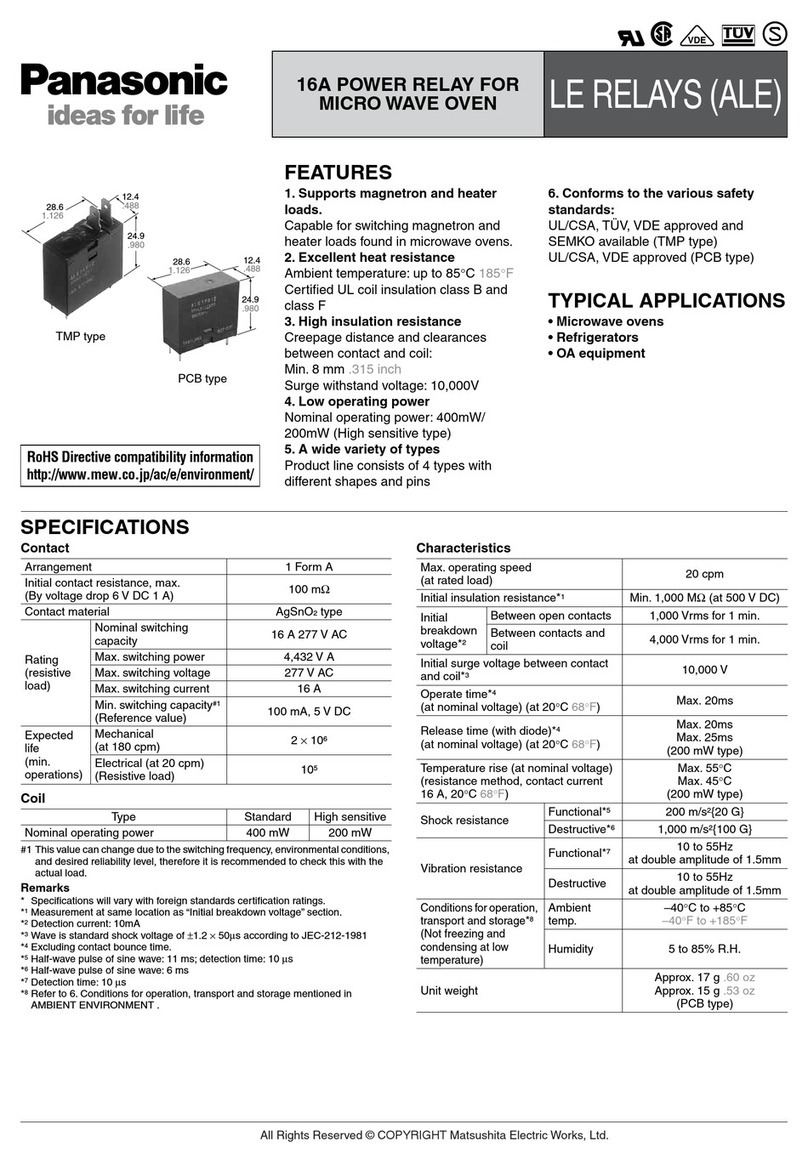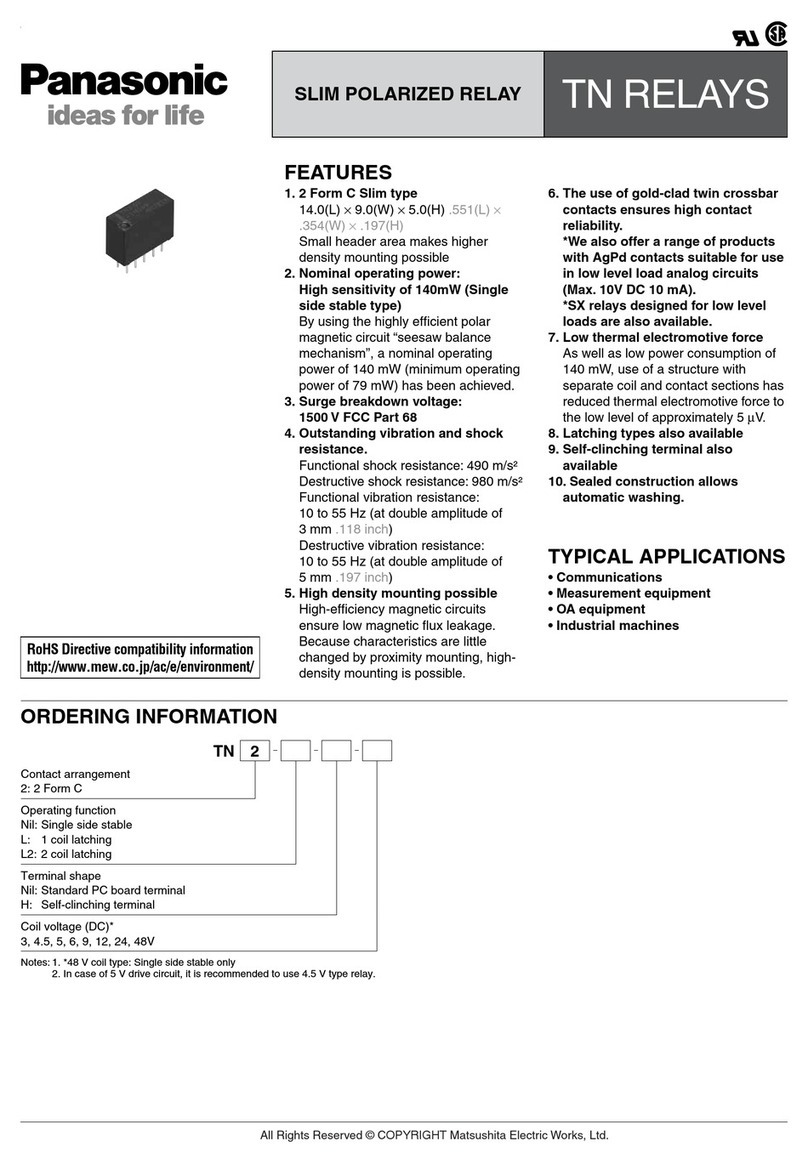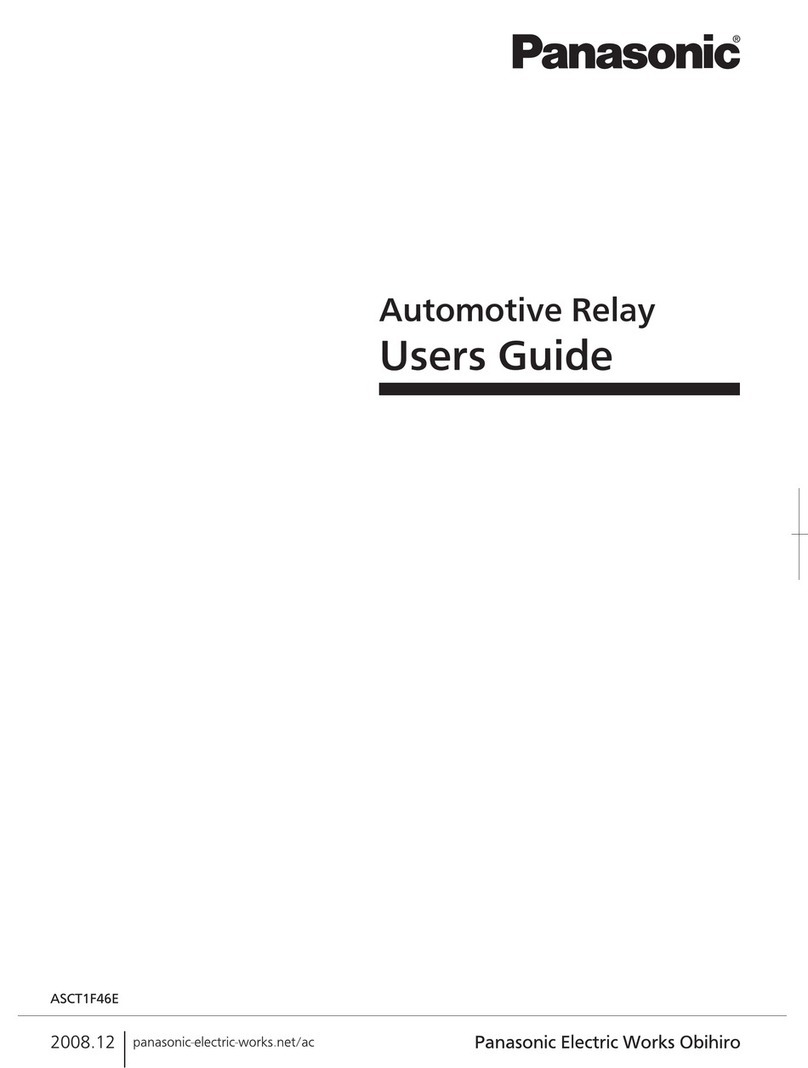
Cautions for Use of Solid State Relays
ASCTB400E 201806-T
9. Ripple in the input power supply
If ripple is present in the input power supply, observe the
following:
1) Current-sensitive type (Phototriac Coupler, AQ-H)
(1) For LED forward current at Emin, please maintain the value
mentioned at “Recommended input current.”
(2) Please make sure the LED forward current for Emax. is no
higher than 50 mA.
2) Voltage-sensitive type (AQ-G, AQ1, AQ8, AQ-J, AQ-A)
(1) The Emin. should exceed the minimum rated control voltage
(2) The Emax. should not exceed the maximum rated control
voltage
10. When the input terminals are connected with reverse
polarity
11. Noise and surge protection at the output side
1) Phototriac coupler and AQ-H
The figure below shows an ordinary triac drive circuit. Please
add a snubber circuit or varistor, as noise/surge on the load side
could damage the unit or cause malfunctions.
Typical circuits are shown below.
2) SSR
(1) AC output type
A high noise surge voltage applied to the SSR load circuit can
cause malfunction or permanent damage to the device. If such a
high surge is anticipated, use a varistor across the SSR output.
(2) DC output type
If an inductive load generates spike voltages which exceed the
absolute maximum rating, the spike voltage must be limited.
Typical circuits are shown below.
3) Clamp diode and snubber circuit can limit spike voltages at
the load side. However, long wires may cause spike voltages
due to inductance. It is recommended to keep wires as short as
possible to minimize inductance.
4) Output terminals may become conductive although the input
power is not applied, when a sudden voltage rise is applied to it
even when the relay is off. This may occur even if voltage rise
between terminals is less than the repetitive peak OFF-state
voltage. Therefore, please perform sufficient tests with actual
conditions.
5) When controlling loads in which the voltage and current
phases differ, a sudden voltage rise is applied during turn-off,
and the triac sometimes does not turn off. Please conduct
sufficient tests using actual equipment.
6) When controlling loads using zero-cross voltage types in
which the voltage and current phases differ, the triac sometimes
does not turn on regardless of the input state, so please conduct
sufficient tests using actual equipment.
12. Cleaning (for PC board mounting type)
Cleaning the solder flux should use the immersion washing with
an organic solvent. If you have to use ultrasonic cleaning, please
adopt the following conditions and check that there are no
problems in the actual usage.
• Frequency: 27 to 29kHz
• Ultrasonic output: No greater than 0.25W/cm2(Note)
• Cleaning time: 30s or less
• Cleanser used: Asahiklin AK-225
• Others: Float PC board and the device in the cleaning solvent
to prevent from contacting the ultrasonic vibrator.
Note: Applies to unit area ultrasonic output for ultrasonic baths
13. Notes for mounting (for PC board mounting type)
1) When different kinds of packages are mounted on PC board,
temperature rise at soldering lead is highly dependent on
package size. Therefore, please set the lower temperature
soldering condition than the conditions of item “14. Soldering”,
and confirm the temperature condition of actual usage before
soldering.
2) When mounting condition exceeds our recommendation, the
device characteristics may be adversely affected. It may occur
package crack or bonding wire breaking because of thermal
expansion unconformity and resin strength reduction. Please
contact our sales office about the propriety of the condition.
3) Please confirm the heat stress by using actual board because
it may be changed by board condition or manufacturing process
condition
4) Solder creepage, wettability, or soldering strength will be
affected by the mounting condition or used soldering type.
Please check them under the actual production condition in
detail.
5) Please apply coating when the device returns to a room
temperature.
Product name If the polarity of the input control voltage is reversed
AQ1, AQ-J,
AQ-A (AC)
Reversing the polarity will not cause damage to the device,
due to the presence of a protection diode, but the device will
not operate.
AQ-H, AQ-G,
AQ8, AQ-A (DC)
Reversing the polarity may cause permanent damage to the
device. Take special care to avoid polarity reversal or use a
protection diode in the input circuit.
Emin. Emax.
U
4
32
1Load
U
34
2
61 Load
U
Load
5
6
8
2
4
3
1
<Phototriac coupler SOP4 and DIP4 types>
<Phototriac coupler DIP6 type>
<AQ-H>
Note: Connection of an external resister, etc., to terminal No. 5 (gate)
is not necessary.
Load
Load power
supply
SSR
1
2Varistor
U
SSR
Load
Load
power
supply
Load
power
supply
SSR
Load
U

